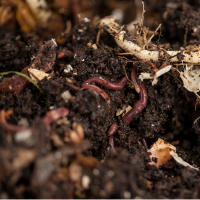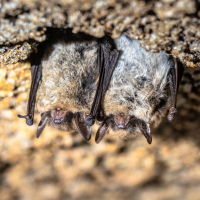6th June 2024
Decay and Decomposition
Death gives way to new life in nature. Decaying organic matter feeds the forest, adding nutrients and allowing new plants to be nourished.
We can find beauty in the return to the earth, in preparation for the cycle to begin again.
Today’s theme can also incorporate the quiet phases in a lifecycle, such as hibernation, rest and diapause.
Nature journaling prompts and ideas
Fungi are a kingdom of organisms that are sometimes classified as decomposers because they can play an active role in the breakdown of organic matter. Fungi: Death Becomes Them is an entertaining and educational video from Hank Green of Crash Course Biology, explaining the crucial role of fungi in decomposition. Can you find examples of fungi in your nearby nature? What shape and size are they? Can you notice ways that they are contributing to decomposition of other natural materials?
In a forest ecosystem, decomposition and decay are the yin to the yang of growth, explains this article from Trees for Life. A fallen log will decay and release nutrients into the soil, nourishing new life. See if you can find examples in your local area of decomposition providing nutrients for new life to grow. How could you document this part of the cycle in your nature journal?
We can find beauty in the changes as a decaying leaf begins to dry, wrinkle and change colour. Our own Bethan Burton talks about the beauty of decay, in this episode of the Journaling with Nature podcast. Bethan shares her process for painting a decaying leaf in this video. Notice the change that happens as things start to decay in nature near you. Can you find beauty in this process? Document this beauty in your own way.
If you turn over the soil in a healthy compost bin, you might see a whole range of different animals that are helping with the decomposition process. You could see earthworms, slaters, beetle larvae, cockroaches, ants and more! Observe how animals interact with decaying material in the soil where you live. What creatures do you find, and what are they doing? Sketch and describe your observations.
As part of today’s prompt we can think about the periods of dormancy and rest that might make up part of an organism’s lifecycle. Hibernation is a way for animals to conserve energy during difficult conditions. In this article by the Australian Academy of Science, you can read about different animals that hibernate and why they use this life strategy. Are there examples of ways that organisms incorporate rest into their lifecycles in nature near you? See if you can document this natural pause in your nature journal.
We have a tendency to want to look away from death because it can bring up emotions around mortality and loss. But we can honour nature by tenderly documenting death in our journals. You might find the skull of a bird, or the body of an animal, or witness death in another way. Sketching these moments in your journal is a way to pay attention to this important and inevitable phase of every life, and process our emotions around death at the same time.






